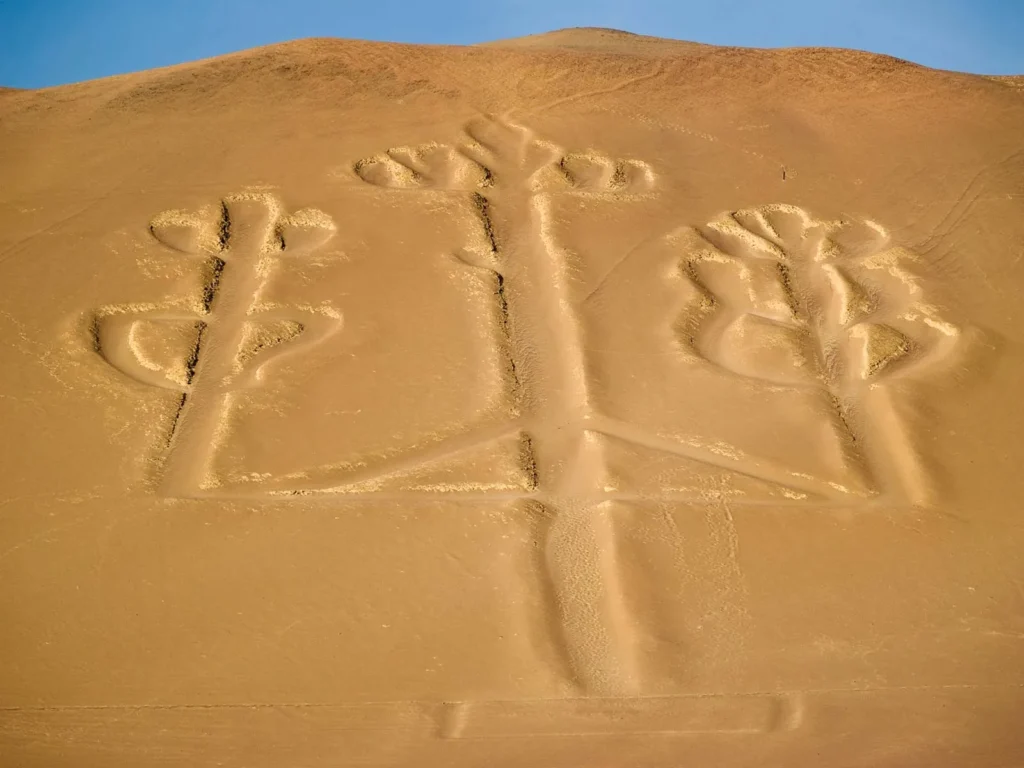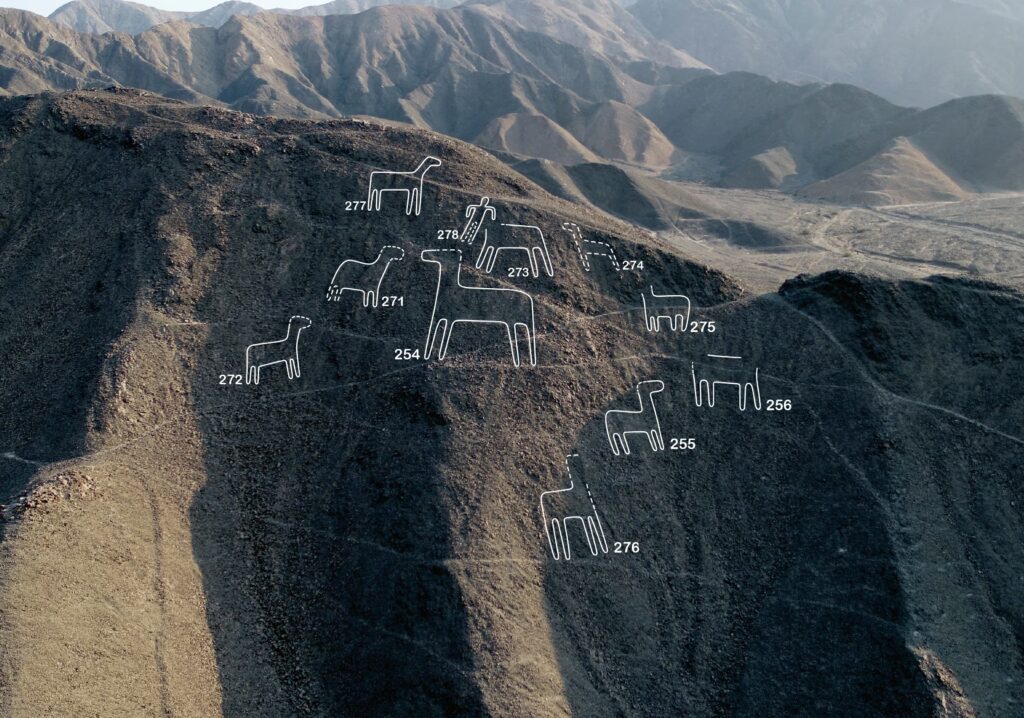Deep in the arid plains of southern Peru lies one of the world’s most enduring archaeological enigmas: the Nazca Lines. Etched into the desert floor over 1,500 years ago, these enormous geoglyphs depict animals, plants, geometric shapes, and figures so large they can only be fully appreciated from the sky. Since their rediscovery in the 20th century, the Nazca Lines have sparked intense debate. Were they religious symbols? Astronomical calendars? Or, as some fringe theorists suggest, messages to extraterrestrial beings?
Whatever their purpose, the Nazca Lines continue to captivate travelers, archaeologists, and conspiracy theorists alike—reminding us how much of the ancient world remains beautifully unexplained.
What Are the Nazca Lines?

Located in the Nazca Desert, between the towns of Nazca and Palpa, these geoglyphs cover an area of nearly 500 square kilometers. The designs include straight lines stretching for kilometers, spirals, trapezoids, and stylized depictions of animals such as a hummingbird, spider, monkey, and condor—some measuring up to 300 meters (1,000 feet) in length.
They were created by the Nazca people between 500 BCE and 500 CE. Using simple tools, they removed the top layer of reddish pebbles to reveal the lighter soil beneath. The region’s dry climate, lack of wind, and minimal rainfall helped preserve the lines for centuries.
Despite their size, the figures were only brought to modern attention in the 1920s when commercial flights began flying over the desert. From the air, the scale and precision of the lines astonished observers—and sparked a global fascination that continues to this day.
The Purpose: Ritual, Astronomy, or… Aliens?
The true purpose of the Nazca Lines remains a mystery, though archaeologists and anthropologists have developed several compelling theories.
Religious or Ritual Significance
Many scholars believe the lines were part of ceremonial practices to honor deities, especially those linked to water—an invaluable resource in the desert. The Nazca people may have walked along the lines during rituals, appealing to the gods for rain and agricultural fertility.
Astronomical Calendar
Another theory, popularized by Maria Reiche, a German mathematician and archaeologist who dedicated her life to studying the lines, is that they functioned as a celestial calendar. She believed certain lines aligned with solstices, equinoxes, and star positions, helping the Nazca track agricultural cycles.
However, modern researchers have found limited evidence for consistent astronomical alignment, suggesting this may have been a secondary function rather than the primary purpose.
Alien Runways?
Perhaps the most sensational theory came from Swiss writer Erich von Däniken, who in his 1968 book Chariots of the Gods? proposed that the Nazca Lines were built either by aliens or as landing strips for extraterrestrial visitors. He pointed to the size, complexity, and lack of visible purpose from the ground as evidence of otherworldly involvement.
Though thoroughly debunked by scientists, von Däniken’s theory catapulted the Nazca Lines into popular culture and continues to fuel speculation. Documentaries, books, and TV shows like Ancient Aliens keep the idea alive—despite the lack of any credible archaeological support.
Visiting the Nazca Lines

For travelers to Peru, seeing the Nazca Lines is an unforgettable experience. The most popular and dramatic way to view them is by taking a small-plane flight from Nazca or Pisco. These 30–60 minute flights provide a bird’s-eye view of the most famous figures and geometric designs.
For those who prefer to keep their feet on the ground (or who get airsick), there’s also an observation tower along the Pan-American Highway, which offers a limited but worthwhile view of a few lines.
While in the area, many travelers also visit the nearby Cantalloc Aqueducts—an impressive system of underground canals built by the Nazca to survive in the harsh desert climate—and the Chauchilla Cemetery, where remarkably preserved pre-Inca mummies rest under open skies.
Preservation and Challenges

In recent years, the Nazca Lines have faced threats from both nature and human activity. In 2018, a truck driver accidentally drove across part of the site, leaving deep tire marks. Illegal mining and urban sprawl also encroach on the protected area.
To combat this, the Peruvian government and UNESCO (which declared the lines a World Heritage Site in 1994) have implemented stricter protective measures and expanded research efforts. In fact, new geoglyphs continue to be discovered, often with the help of satellite imagery and drone technology, revealing that the desert still holds secrets waiting to be uncovered.
Final Thoughts
Whether messages to the gods, star maps, or ancient artwork with cosmic curiosity, the Nazca Lines defy easy explanation. Their scale, precision, and endurance are a testament to the ingenuity and spiritual depth of the Nazca civilization.
For those who gaze down upon them from the sky, the lines are more than just patterns in the sand—they’re an invitation to wonder, a reminder that not everything about our past is fully understood, and perhaps never will be. And in that mystery lies their enduring power.
